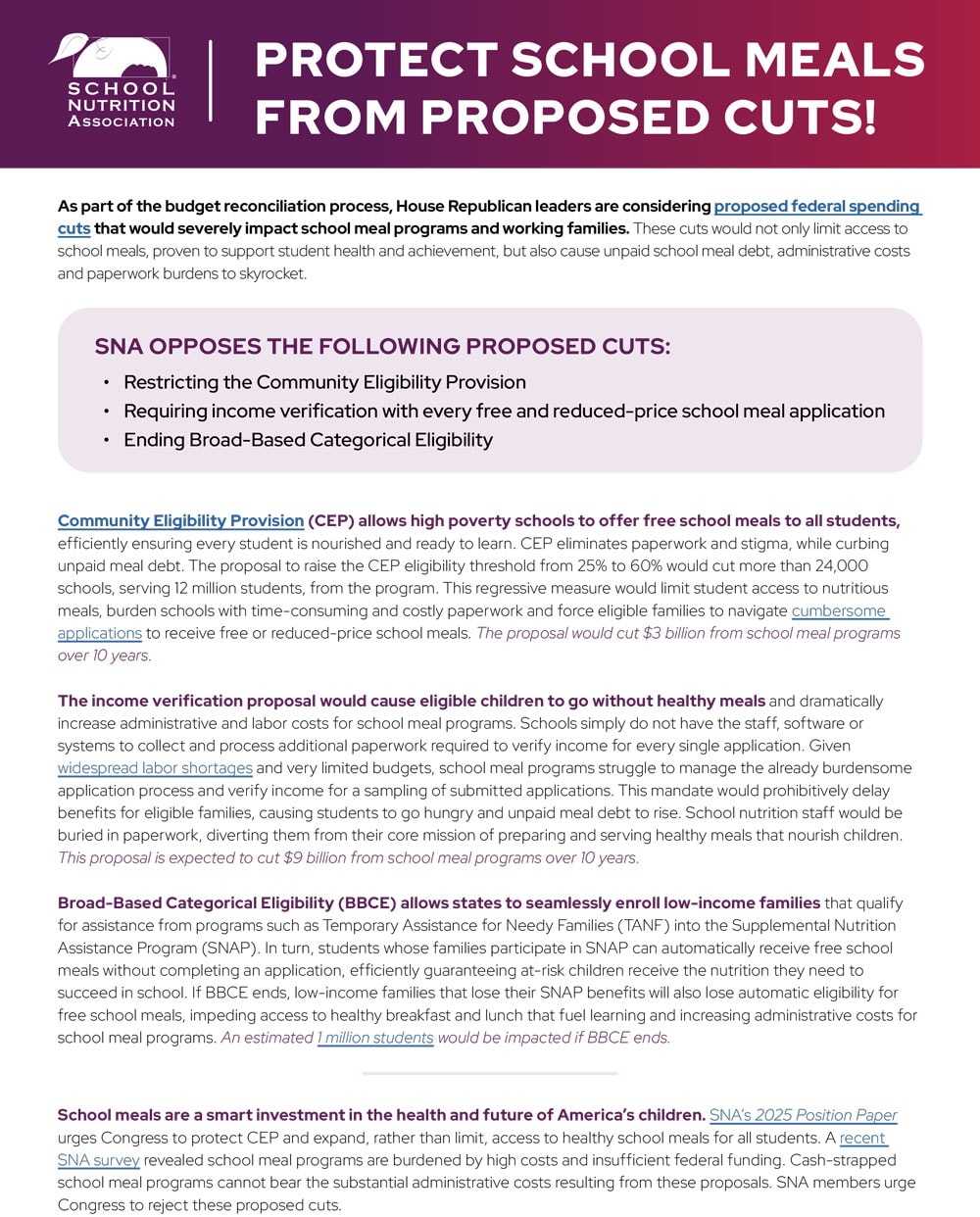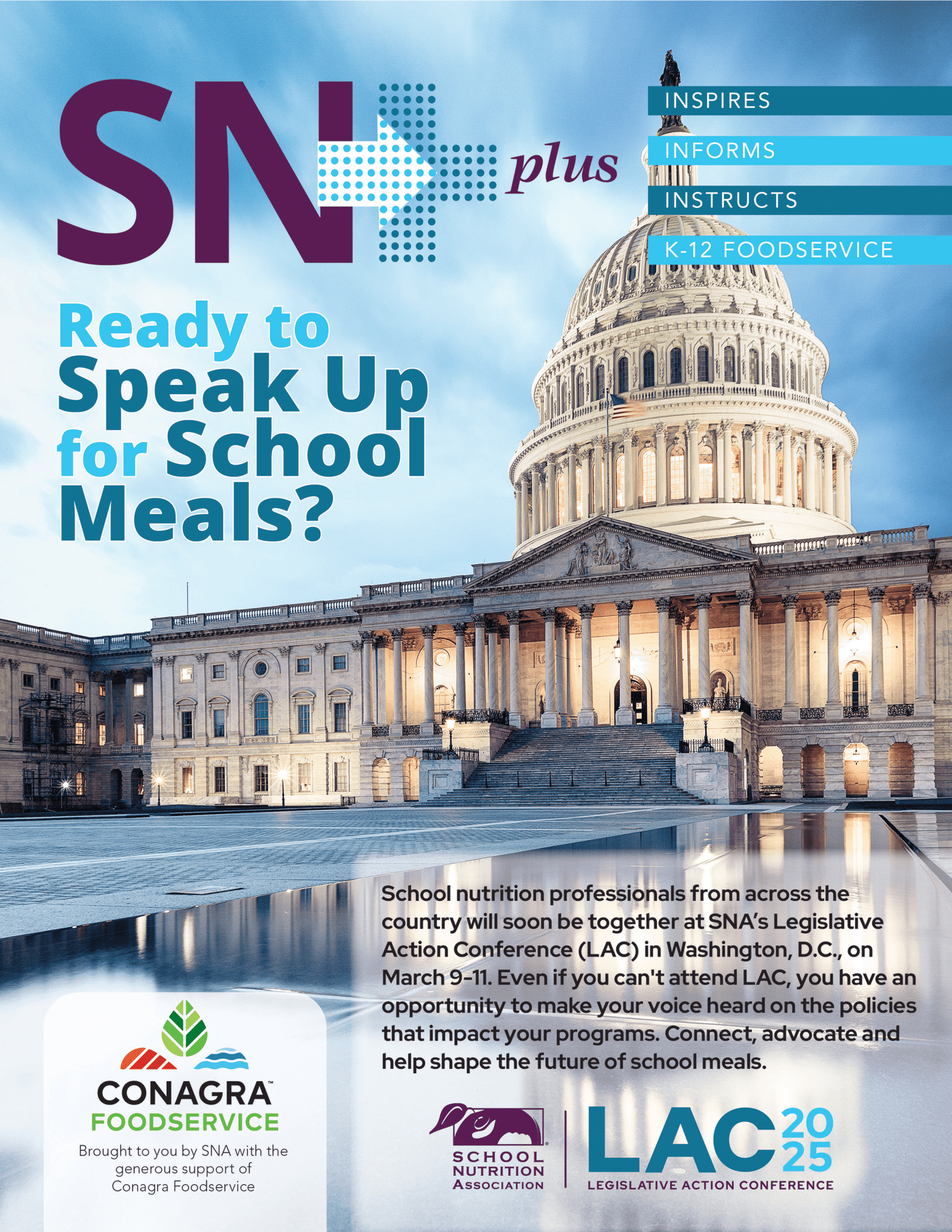Resource
2022 Position Paper Fact Sheet: Expand NSLP-SBP to Offer Healthy School Meals for All Students at No Charge to Support Academic Achievement
Pre-pandemic, only students from homes with incomes below 130 percent of the poverty line ($34,450 for a family of four in 2021-22) were eligible for free school meals. Recognizing the vast benefits of providing free school meals and the many barriers to access them, including stigma and the complicated free meal application process, USDA issued pandemic regulatory waivers temporarily allowing schools to serve all students free meals without an application. Students, families and school meal programs alike have reaped the benefits of offering equal access to free school meals during the pandemic and through the Community Eligibility Provision (CEP).
Permanently offering healthy school meals for all students will:
Support academic achievement and foster healthy eating habits
Research shows students receive their healthiest meals at school, and school meals are proven to support learning, boost test scores, improve attendance and classroom behavior, and contribute to students’ overall health and wellness. Studies show school lunches support obesity prevention; children receiving school lunches consume fewer empty calories and more milk, fruit, vegetables and fiber than their peers. Continuing to provide all students equal access to healthy school breakfast and lunch as part of their educational experience will ensure every child is nourished and ready to learn each school day.
Combat food insecurity by ensuring access to school meals
One in seven, or 14.8 percent, of households with children struggle with food insecurity, putting children at risk of going without the nutrition they need to focus on their studies. Food insecurity is linked to negative health, development and educational outcomes, such as slower progress in math and reading and a higher likelihood of repeating a grade.
Continuing to provide school meals at no charge will ensure no child goes hungry during the school day, experiences shame or accrues unpaid meal debt, a significant burden on families and school district budgets. Pre-pandemic, 75% of school districts reported having unpaid student meal debt, and the amount of debt reported was rising. When families are unable to pay for student meals, schools must cut into education funds to cover the debt. Providing meals at no charge will eliminate unpaid meal debt, anticipated to increase as a result of current economic challenges. No student will have to worry about going without a healthy meal at school.
Ease burdens on school nutrition staff, so they can focus on serving students
Offering free meals to all children allows school nutrition professionals to focus on nourishing students, without having to worry about verifying which child is eligible for a free meal and which child must pay. Students benefit from a safer and speedier meal service with fewer touch points, and school nutrition staff spend less time on paperwork and reporting requirements.
Category
Resource Type
Year Added
2022
Related Resources

Protect School Meals from Proposed Cuts
Read More

SN Plus: Ready to Speak Up for School Meals?
Read More

